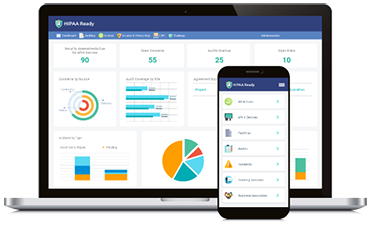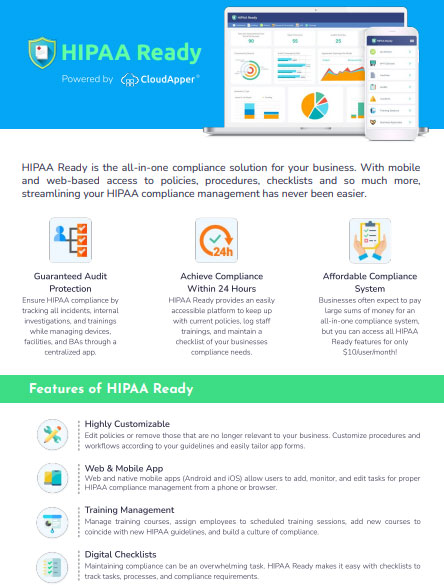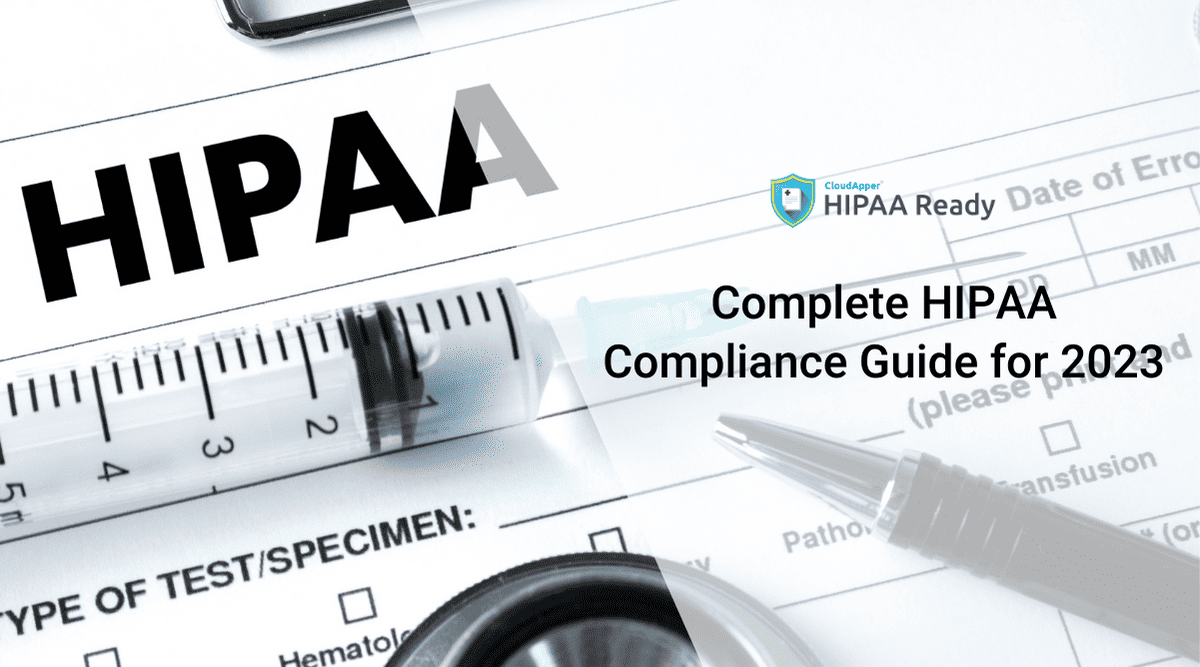Table of Contents
Formulating the appropriate strategies for HIPAA compliance is crucial – if organizations fail to comply, it can lead to devastating results, including hefty fines. According to the United States Department of Health and Human Services (HHS), approximately 70% of organizations are failing to meet HIPAA compliance effectively. This clearly shows that many organizations are still perplexed about formulating proper strategies to ensure compliance. There is no single key to HIPAA compliance, but this article will highlight five strategies you can implement to meet the HIPAA compliance requirements.
A brief summary of HIPAA
In 1996 the federal law HIPAA was established to help American workers and their families, by providing the ability to transfer and continue health insurance coverage when they change or lose their jobs. Other purposes also include keeping doctor-patient confidentiality intact by ensuring the privacy of health information, securing electronic patient records, and simplifying administrative processes.
The law applies to covered entities and business associates that deal with patient information. Before sharing any patient information, a Business Associate Agreement (BAA) must be made and executed between the covered entity and the business associate or between both the business associates. When people say patient information, it generally means Protected Health Information (PHI) or Electronic Protected Health Information (ePHI).
There are no specifics mentioned on how to achieve compliance with HIPAA. The key to HIPAA compliance is a complex undertaking process where the program must be developed, monitored, and maintained. Besides respecting doctor-patient confidentiality, there are other elements that you must pay attention to. That being said, here are a few steps that are key to HIPAA compliance:
Running risk assessments within your organization
One of the first keys to HIPAA compliance is running risk assessments. Assess the loopholes within your organization. Medical practices, as well as business associates that handle PHI on their behalf, are required to conduct risk assessments from time to time. It helps to ensure that the organization is taking adequate measures to comply with HIPAA through proper technical, physical, and administrative safeguards. A risk assessment also helps to discover areas where an organization’s protected health information could be at risk.
Establishing the Privacy and Security Policies
After completing risk assessments, organizations need to put further plans forward. As required by HIPAA, covered entities and their business associates must have adequate measures in place to protect the privacy and integrity of medical records. The HIPAA Privacy Rule sets the national standard for organizations to adhere to protect identifiable information which is either stored in physical spaces or digital formats. This rule applies to organizations that conduct standard healthcare transactions electronically such as health plans, providers, and health care clearinghouses. The HIPAA Security Rule establishes the national standard for organizations to take appropriate safeguarding measures to protect patients’ electronically-stored protected health information from malware attacks, cyber breaches, etc.
Having a contingency plan in place
Another key to HIPAA compliance is having a data backup and restoration strategy. Cyberattacks and security breaches have become so pervasive over the years, causing healthcare providers to lose millions every year in fines for data breaches. The best way to tackle this issue is to back up your files and check the backup system from time to time.
Training your staff members
Perhaps the single most notable aspect in achieving compliance is that your employees and staff members have basic knowledge about the key to HIPAA compliance. If you have taken all the adequate measures by setting up plans, policies, and programs to protect patient information your efforts will be in vain if your employees do not understand the processes. It is recommended to set up comprehensive training sessions to teach your employees how to handle patient information, what types of passwords should be used, how to spot vulnerabilities and threats to watch out for. You must instill a HIPAA Compliant culture within your organization.
Document Everything
Proper documentation can help in case anything goes wrong with the electronic systems. Moreover, as required by the law, documentation is necessary, and also can help you prove that you are taking adequate measures concerning safeguarding patients’ information. During audits, auditors will ask for documents related to compliance as well as business procedures, such as facility blueprints, organizational workflow charts, password policies, training logs, work desk procedures, and many more. Staying up to date with documentation can not only prove your compliance efforts but it can also reduce your stress when you have to find these documents at the last minute when auditors come knocking down at your door.
Simplification of your practice is another key to HIPAA Compliance
Medical practices and their business associates should strive for a robust HIPAA compliance program that addresses the obligation to comply reasonably and appropriately in their environment. There is no shortcut with a simple checklist or roadmap to it.
HIPAA Compliance software like HIPAA Ready can guide organizations to achieve their goals while remaining compliant. This robust application includes a digital checklist of tasks and meetings, action plans, policy centers, and lets you manage training effectively.
Understanding the significance of doctor-patient confidentiality, HIPAA Ready can streamline your activities by ensuring you spend less time worrying about HIPAA and more time worrying about what’s best for your patients.
What is CloudApper AI Platform?
CloudApper AI is an advanced platform that enables organizations to integrate AI into their existing enterprise systems effortlessly, without the need for technical expertise, costly development, or upgrading the underlying infrastructure. By transforming legacy systems into AI-capable solutions, CloudApper allows companies to harness the power of Generative AI quickly and efficiently. This approach has been successfully implemented with leading systems like UKG, Workday, Oracle, Paradox, Amazon AWS Bedrock and can be applied across various industries, helping businesses enhance productivity, automate processes, and gain deeper insights without the usual complexities. With CloudApper AI, you can start experiencing the transformative benefits of AI today. Learn More



























